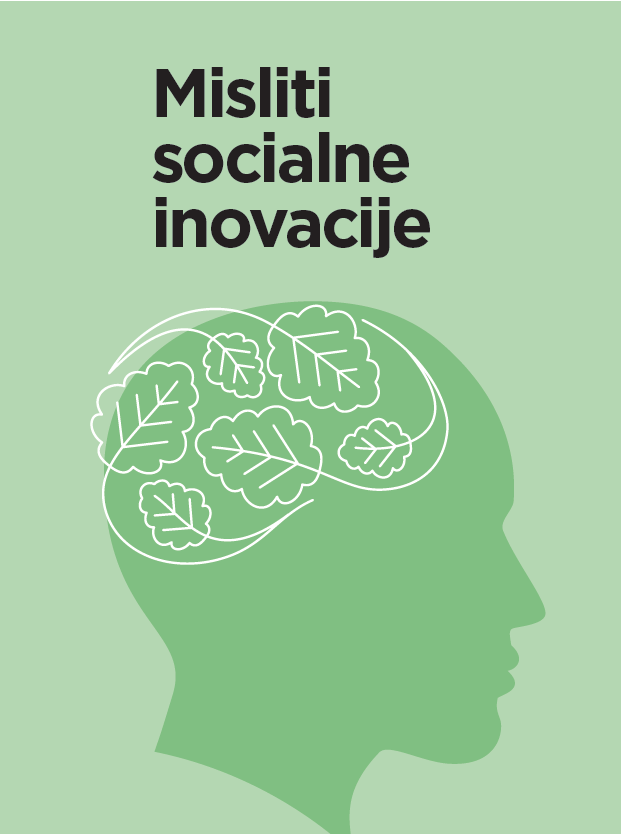REFORM OF THE SOCIAL PROTECTION SYSTEM IN THE REPUBLIC OF MACEDONIA
MILA CAROVSKA – MINISTER FOR LABOUR AND SOCIAL POLICIES OF REPUBLIC MACEDONIA
The formation of the idea of an innovation
While social protection spending in Macedonia is comparatively high, spending on antipoverty social assistance programs is low and fragmented across several programs. The coverage and the adequacy of benefit levels for the Social Financial Assistance, the best targeted program, remains low, while the incentives for social assistance beneficiaries to take up employment remain absent. Gaps in program coverage leave many households mired in poverty and there was an urgent need to be addressed through reforms.
Recognizing the challenges in the area of improving the support of the most vulnerable categories of citizens, and taking into account the rates of poverty rate in the past few years, in order to achieve the goal of the Government of the Republic of Macedonia to reduce the poverty rate below 16% in 2020 is intensively working on improving the situation and fully redesigning the support of the most vulnerable categories of population and dealing with poverty. According to the latest published statistical data from the Statistical Office, obtained on the basis of the data from the Survey on Income and Living Conditions (SILC), the poverty rate in the Republic of Macedonia in 2017 is high 22.2%. According to the most frequent status of economic activity, the rate of poor employed persons is 9.0%, while the rate of poor pensioners is 7.7%. The Gini coefficient (measure of inequality in the distribution of revenues) is 32.5%.
In autumn 2017, the Government has commissioned systematic assessment of the social and child protection system in the country. According to the diagnostic of the current system of financial rights from the social and child protection, the coverage is relatively limited, adequacy unbalanced with some households receiving a significant amount while others very little, and the system lacks the right set of incentives to push people out of the informal economy. The system is also complicated with benefits requiring different applications and resulting in unequal treatment of people in similar circumstances. Regarding the services of social protection, they do not follow the individual needs of the end users, and they should be provided in the community through further implementation of the process of de-institutionalization, decentralization and pluralization.
After series of assessments and alternatives following the commissioned report from the local researchers, the Government has agreed to introduce the guaranteed minimum assistance and to modify the associated rights and services from the social and child protection system.
Also, all GMA beneficiaries with children will be entitled to a child allowance (CA). A novelty of the reform is the introduction of the educational allowance (EA) for primary and secondary education, which represents an extension of the current conditional cash transfer (CCT) for secondary education. In order to improve the coverage of the social and child protection system, CA and EA will be provided not only to GMA beneficiaries but also to all households living on a minimum wage. In terms of activation of GMA beneficiaries, a novelty of the reformed system is that all able working adult household members will be required to register with the employment office and be obliged to accept services and measures for employment and re-training. Thus, the activation will not only be a responsibility of the GMA right holder (as it is in the current system), but of all unemployed household members.
The reform of the rights to financial assistance from social welfare is based on:
– Introducing a guaranteed minimum income (GMP);
– Integrating different categorical benefits into generic assistance according to the need of the beneficiaries (instead of the profile of the beneficiary);
– Introduction of educational allowance;
Possibility of combination different financial assistances (top-up benefits);
– Simplifying and unifying the administrative procedure for acquiring the rights to financial assistance (the same approach for estimating the income of the beneficiaries of guaranteed minimum income, educational allowance and child allowance will allow the possibility to determine the eligibility for several rights to financial assistance with one submitted application)
– Integrated approach between the rights to financial assistance and social services, and
– Enhanced activation of beneficiaries of guaranteed minimum income.
The primary goals of the reform of the rights to financial assistance from social welfare are:
– Increasing the effectiveness of financial assistance from social welfare on reduction of income poverty in the Republic of Macedonia and
Reducing child poverty
– De-stigmatization of financial assistances (and its beneficiaries)
In order to achieve one of the highest priorities, eradicating child poverty, the amendments to the Law on Child Protection provided easier access to children’s allowance for families with children with low incomes. Namely, the requirement that the family must have an employee member, a condition that has so far been crucial in exercising the right to child allowance, has been deleted.
So far, the number of child allowance beneficiaries in 2018 is 3200, and after the adoption of the changes, the number of children’s children is expected to increase to 73,500 children.
A novelty in child protection is the introduction of an educational allowance for children attending regular and primary school classes in order to support parents in meeting school expenses, thus preventing early school leaving. The current entitlement to Conditional Compensation (further education allowance) was only for children from secondary education beneficiaries of SFA and child allowance, and it is expanding for children in primary education, but also for all low-income households. The number of children in education allowance in 2018 is 3,800 children, and it is projected to increase to 64,316 children.
One of the key elements for implementation success of the new Law on social welfare is strengthening the role of the Employment Centers and their greater coordination with the Centers for Social Work in order to improve the activation of beneficiaries of the guaranteed minimum income, that is introducing integrated case management. Strengthened focus on the obligation to use active services and employment measures should be a key factor in preventing the primary risk of social welfare reform –i.e. combining the informal economy and using the increased amounts of guaranteed minimum income.
The reform also encourages the redesign of the social services system, which means developing a model of social agreements by establishing a methodology for calculating the cost of services, which will increase the availability, quality and innovation of social services. In this way, the pluralization of the activity will be encouraged and the possibility of delegating social services to external providers will be opened.
The classification of social services contains six groups:
(1) Information and referral services
(2) Professional assistance and support services
(3) Social prevention and counseling services
(4) Home based services
(5) Community based services
(6) Out-of- family services
Also, a procedure is envisaged through which local self-governments will be able to apply for MLSP funding for development of services according to local needs.
In support of this process, the new draft Law on Public Procurement stipulates a provision by which the contracting authority may decide to reserve the right to participate to certain organizations, exclusively when procuring social, health and cultural services – called reserved public procurements. In these purchases, profits are reinvested for the purposes of the association which must be non-profit and deliver a public address, and the duration of the contract cannot be longer than three years.
Key actors that participated in the development and implementation of the innovation
The preparation of the new legal solutions and proposed reforms were done by a working group composed of experts in the field, expert workers, civil society organizations, employees from the centers from social work, Institute for Social Affairs, international organizations and involvement of professors from the Institute for Social Work and Social Policy.
The public response to the innovation
In general, the public response has been very positive towards the proposed changes. The implementation phase is expected to start from January 2019.
What is the status of the innovation today?
At the moment, the laws are in Government procedure. The budget for the reform has been secured in the 2019 budget and parallel activities are carried out for the preparation of the experts for the implementation of new solutions and adaptation and preparation of new software solutions that support the administration and monitoring of new monetary rights and services.
Morda vam bo všeč tudi

MATTILA, PROSTOR SREČEVANJA MOŠKIH
12/02/2019
POWER PLANT IN KRIŽEVCI DEVELOPMENT CENTRE AND TECHNOLOGY PARK
13/02/2019
